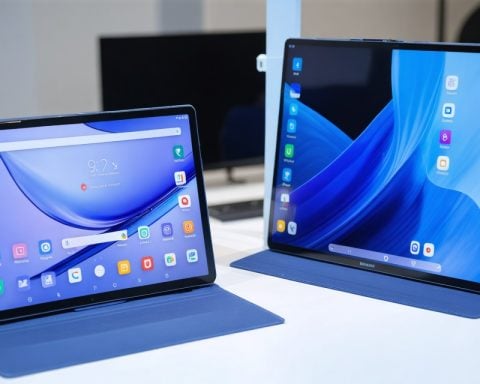- An incident in Shanghai involved a woman, Lee, who fell while distracted by her smartphone, resulting in a spinal fracture.
- Despite her lawsuit for compensation against the restaurant, the court ruled in favor of the defendants due to clear weather and her lack of attention.
- The verdict emphasized that venues are responsible for known hazards, but not for accidents caused by personal distraction.
- This case illustrates the importance of awareness and personal responsibility in maintaining safety in public spaces.
- It highlights a broader message: individuals should prioritize attentiveness over digital engagement to prevent accidents.
A gentle afternoon unfolded into an unexpected ordeal for a woman in Shanghai. As Lee exited a restaurant with eyes glued to her smartphone, she missed the concrete underfoot, stumbling down a set of stairs. Surveillance footage captured the incident with unsparing clarity: Lee’s left foot grazed a slope’s edge, and before her right foot could ascend, gravity claimed her balance.
The weather on that day was benign—no rain, snow, or ice to render the steps treacherous. Yet, ten days later, Lee was diagnosed with a fracture on her lumbar spine, leading her to claim the restaurant and its managing company failed to maintain a safe environment. Her claim included compensation for medical expenses and lost wages.
However, the court’s verdict echoed a modern parable: heed your personal safety. The Shanghai High People’s Court, upon reviewing the facts—clear skies, dry steps, and a conspicuous inattention to the path ahead—ruled in favor of the defendants. The restaurant’s duty, the court reasoned, could not extend to predicting nor preventing a customer’s distracted slip.
Indeed, public venues shoulder a weighty responsibility to uphold safety. Yet, as Judge Liu Jia of the Shanghai High Court elaborated, this duty is bound by the limits of reasonable foresight. Operators must mitigate known hazards, but they are not held accountable for unforeseen incidents spurred by visitors’ inattention.
In a world dominated by screens, this tale serves as a cautionary reminder. The key takeaway underscores the importance of awareness in everyday routines. It’s a clarion call to put down the phone and lift one’s gaze, safeguarding oneself from the pitfalls of the digital age. Safety is a shared responsibility—a pact between venue operators and individuals, each fulfilling their role in preventing mishaps of modern negligence.
The Hidden Dangers of Smartphone Distraction: How to Stay Safe in Public Spaces
Distraction in the Digital Age: A Modern Challenge
The incident involving Lee in Shanghai is a stark illustration of how easily digital distraction can lead to physical mishaps. With smartphones becoming an integral part of our daily lives, incidents like these are becoming alarmingly common. According to the National Safety Council, walking while using a phone causes over 11,000 injuries annually in the U.S. alone.
Real-World Use Cases: The Importance of Environmental Design
While distractions are often blamed on individuals, urban planners and architects are exploring ways to design environments that reduce the likelihood of such accidents. Elements such as textured pavement, contrasting stair edges, and warning signs can play crucial roles in enhancing public safety. Retailers and public venue operators might consider these design principles to proactively safeguard their spaces.
The Legal Perspective: Premises Liability and Foreseeability
In legal terms, the responsibility of premises owners centers around “foreseeability.” Income in liability cases often depends on whether the hazard was foreseeable and preventable by the venue. The Shanghai case, where the court ruled against the claimant due to clear conditions and personal inattention, highlights the limits of liability for property owners. This has implications beyond China, shaping legal strategies and defenses in similar cases globally.
How-To Steps & Life Hacks for Staying Safe
1. Practice Mindful Walking: Always be aware of your surroundings. If you must use your phone, stop walking and step aside to a safe location.
2. Use Voice Assistants: Leverage technology to reduce manual phone usage. Voice commands and assistants can help you interact with your device without looking at it.
3. Set Reminder Alerts: Use app features to schedule alerts reminding you to be mindful of your environment when you frequently travel or navigate busy areas.
Market Forecasts & Industry Trends
With increasing smartphone usage, there is a growing market for apps and wearables designed to improve user safety. Features like danger alert systems and improved navigation aids (using haptic feedback) are becoming more common. Companies that develop these technologies could see substantial growth, driven by increasing consumer awareness of distracted walking dangers.
Controversies & Limitations
While technology can aid in reducing distractions, it can also be a double-edged sword. Over-reliance on apps or haptic reminders might lead to complacency, rather than ingraining the habit of attentiveness. Moreover, not all public spaces have the resources to implement advanced safety designs, leading to a disparity in safety across different regions.
Conclusion and Actionable Recommendations
In today’s digital era, the balance between staying connected and personal safety is crucial. Public awareness campaigns, along with strategic urban design, can help mitigate risks associated with smartphone distraction. On an individual level, cultivating habits of mindfulness and leveraging the right technology can significantly reduce the risk of accidents.
Quick Tip: Next time you’re heading out, challenge yourself to keep your smartphone in your pocket until you reach your destination. Consider it a digital detox moment and breathe in the surroundings.
For more insights on safety and technology, visit National Safety Council.
Consider using apps such as Google Maps’ new “Outdoor SOS” feature or the iOS “Look Around” to stay aware without needing to fix your gaze on your screen.












